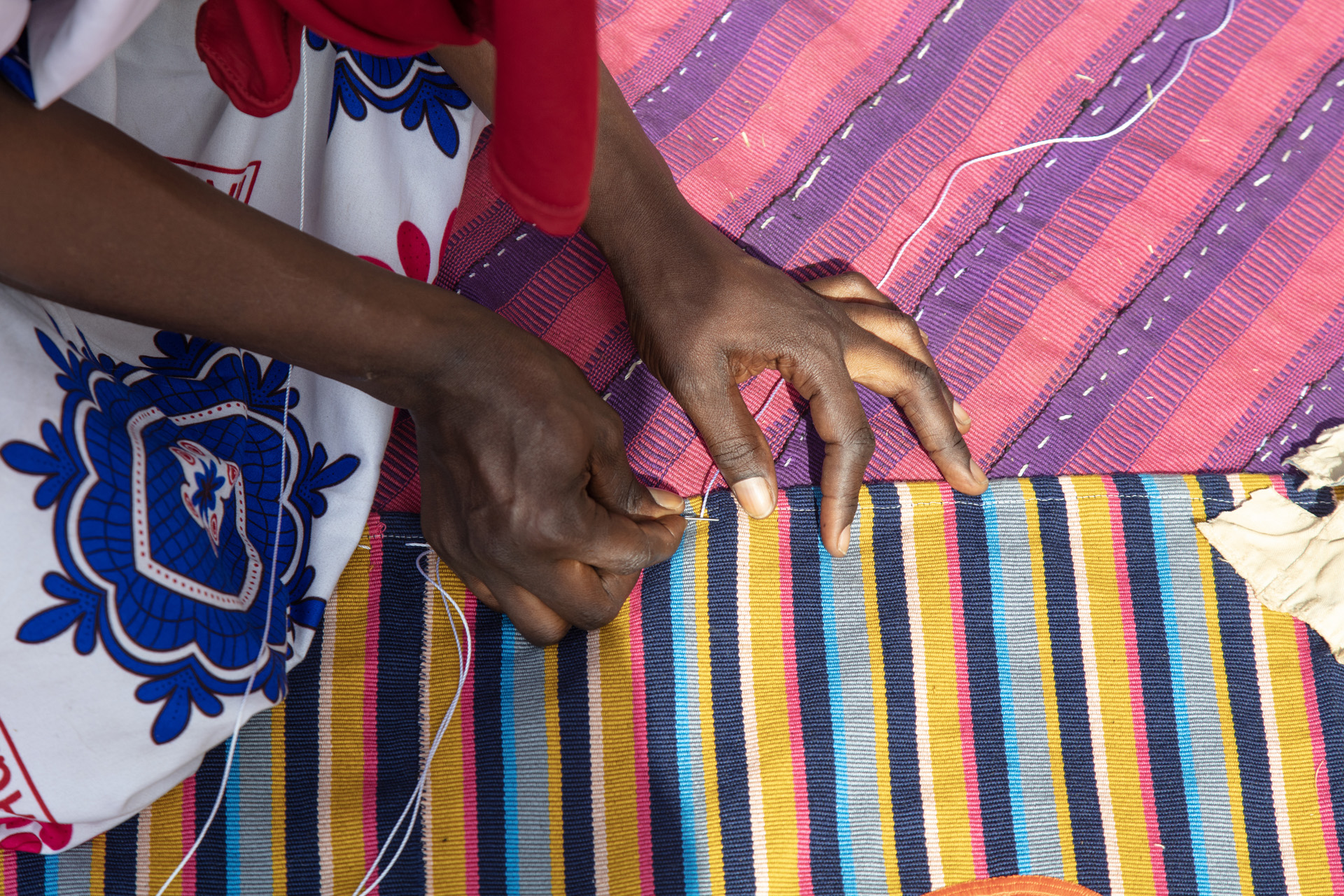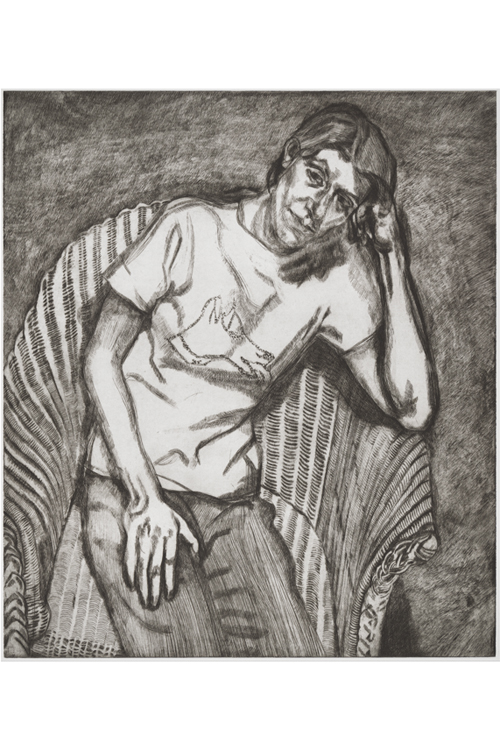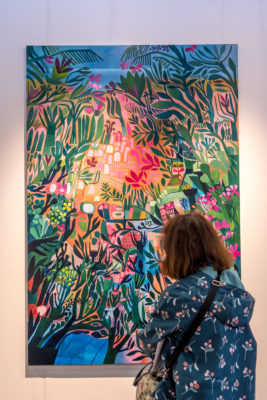The Barbican’s Lakeside Terrace Has Been Transformed With A New Commission
By
1 year ago
It's the first time a commission has been presented here

The Barbican’s lakeside terrace is an oasis in the heart of the iconic brutalist structure – and it’s just had a huge, purple makeover. For the first time ever, a site-specific commission has been installed in the space, entitled ‘Purple Hibiscus’. Here’s everything you need to know.
Purple Hibiscus By Ibrahim Mahama At The Barbican

Ibrahim Mahama, Purple Hibiscus, 2023-24. Courtesy Ibrahim Mahama, Red Clay Tamale, Barbican Centre, London and White Cube.
Ghanaian artist Ibrahim Mahama is bringing a stunning, large-scale installation to the Barbican’s lakeside terrace, which sits at the heart of the iconic brutalist complex. The site-specific artwork, named ‘Purple Hibiscus’ after Chimamanda Ngozi Adichie’s 2003 novel, consists of approximately 2000 square metres of bespoke woven cloth, created in collaboration with hundreds of craftspeople from Tamale, Ghana.
Enveloping the building’s concrete exterior, Purple Hibiscus will be installed on 10 April 2024, bringing colossal panels of pink and purple to the concrete space. Embroidered onto the cloth are approximately 100 ‘batakaris’ – robes worn by Northern Ghanaian royals and ordinary people. Precious textiles typically saved by families over generations, Mahama collected these batakaris through exchange and barter from numerous communities across Northern Ghana. Mahama is deeply interested in the life cycles of textiles and what we can learn from the historical memories embedded within them, and the batakaris bear traces of use, testifying to the endurance of the traditional belief systems and continued relevance of intergenerational knowledge.
‘It’s like doing plastic surgery, but this time you require a soul that dwells within the body, which is immaterial to build on the physical material,’ Mahama says. ‘Collecting the individual smocks from communities can be quite challenging, but also opens up a portal of new formal aesthetics. Using the Alui Mahama sports stadium in Tamale as the primary studio space for the production of Purple Hibiscus allowed for us to organise the different layers of the work in ways we couldn’t have possibly imagined. The scale of the material forms needed some level of freedom, which the space gifted.’
While Mahama worked with local networks of women weavers and sewing collectives for the production of Purple Hibiscus, its installation at the Barbican also resonates with this tradition of craft: the Barbican Centre stands on the former Cripplegate parish, the centre of London’s ‘rag trade’ which was largely destroyed in the Second World War.
‘Following Ranjani Shettar’s exquisite commission for the Barbican Conservatory, we are thrilled to be presenting Purple Hibiscus by Ibrahim Mahama,’ says Shanay Jhaveri, Head of Visual Arts at the Barbican. ‘At a time of increasing fracture and disharmony, Mahama, with this monumental site-specific artwork – the second in our newly launched commission series – will transform the Barbican’s iconic Lakeside into a site and space for the commemoration of community, intergenerational memory and solidarity, all achieved by the incredible capabilities and capacity of the human hand.’
The commission forms part of the Barbican Centre’s upcoming exhibition Unravel: The Power & Politics of Textiles in Art, which will open at Barbican Art Gallery on 13 February 2024.
When?
‘Purple Hibiscus’ has been installed and will remain in place until 18 August 2024.
Unravel: The Power & Politics of Textiles in Art runs from 13 February to 26 May 2024.
Where?
Lakeside Terrace, Barbican Centre, Barbican, London EC2Y 8DS.
Unravel: The Power & Politics of Textiles in Art will take place in the Barbican Art Gallery, Level 3, Barbican Centre Silk Street, London, EC2Y 8DS.









